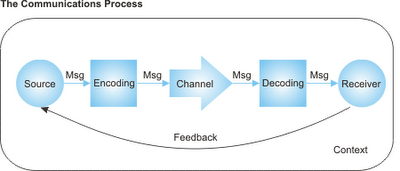
5 elements of communication cycle full#
The sender might be using too much specialist language (jargon) that won’t be understood by the recipient right away or the sender might encode a message that is full of prejudices and/or personal opinions. When the sender experiences internal static, he won’t be able encode his message accurately.

Internal noise usually occurs at the sender or at the recipient. When the interference is created on purpose, it is known as intentional noise. This noise can occur internally, within the Communication Cycle model, or externally, outside of the Communication Cycle model. Within communication, that kind of interference is called noise or static. This is then referred to as miscommunication. Still, there can be interference in the Communication Cycle that leads to misunderstandings. The more clearly the sender has encoded the message, the more accurately the recipient can decode it, minimising the chance of misunderstandings. Because every human being has their own and unique frame of reference, determined by background, education, how they were raised, experiences and so on, every individual will interpret a message differently. He interprets what he’s seeing and hearing and translates it into thoughts. That’s why it’s good that a sender focuses on a target group and tailors his message as much as possible to that group.Ĭonversely, the recipient tries to ‘crack’ the sender’s message through decoding. He therefore carefully chooses his words, considers the level of his recipient and tries to make clear what he means. He translates what he has in his head to understandable language, with the intention that the recipient will understand what he means. A message has to be transmitted in such a way that it can be understood by both the sender and the recipient.įor this, the sender uses coding. On the one hand we see (en)coding and on the other decoding. How the message is communicated and how it is understood are two different things. Coding and decoding the messageĪ message is communicated in different ways spoken and written words (language), signs such as smoke, colours and symbols (semantics) and body language (non-verbal communication). He can also use supporting media, such as a PowerPoint presentation, flip chart, music or a slide show. In addition to the voice for spoken words, the sender uses gestures, facial expression, posture and intonation as media. The sender usually uses multiple media to get to the recipient. The message itself has to be carried by a medium, also called a channel.

How the recipient handles it and interprets the message is called the appellative function. This message is intended for the recipient(s). It can be information, an emotion, song, dance, and so on. Through language and/or body language, he expresses something and sends it to the recipient. To really understand the Communication Cycle model, it’s wise to first take a closer look at all components. Do you want unlimited ad-free access and templates? Find out moreĬommunication Cycle: sender, message and recipient


 0 kommentar(er)
0 kommentar(er)
